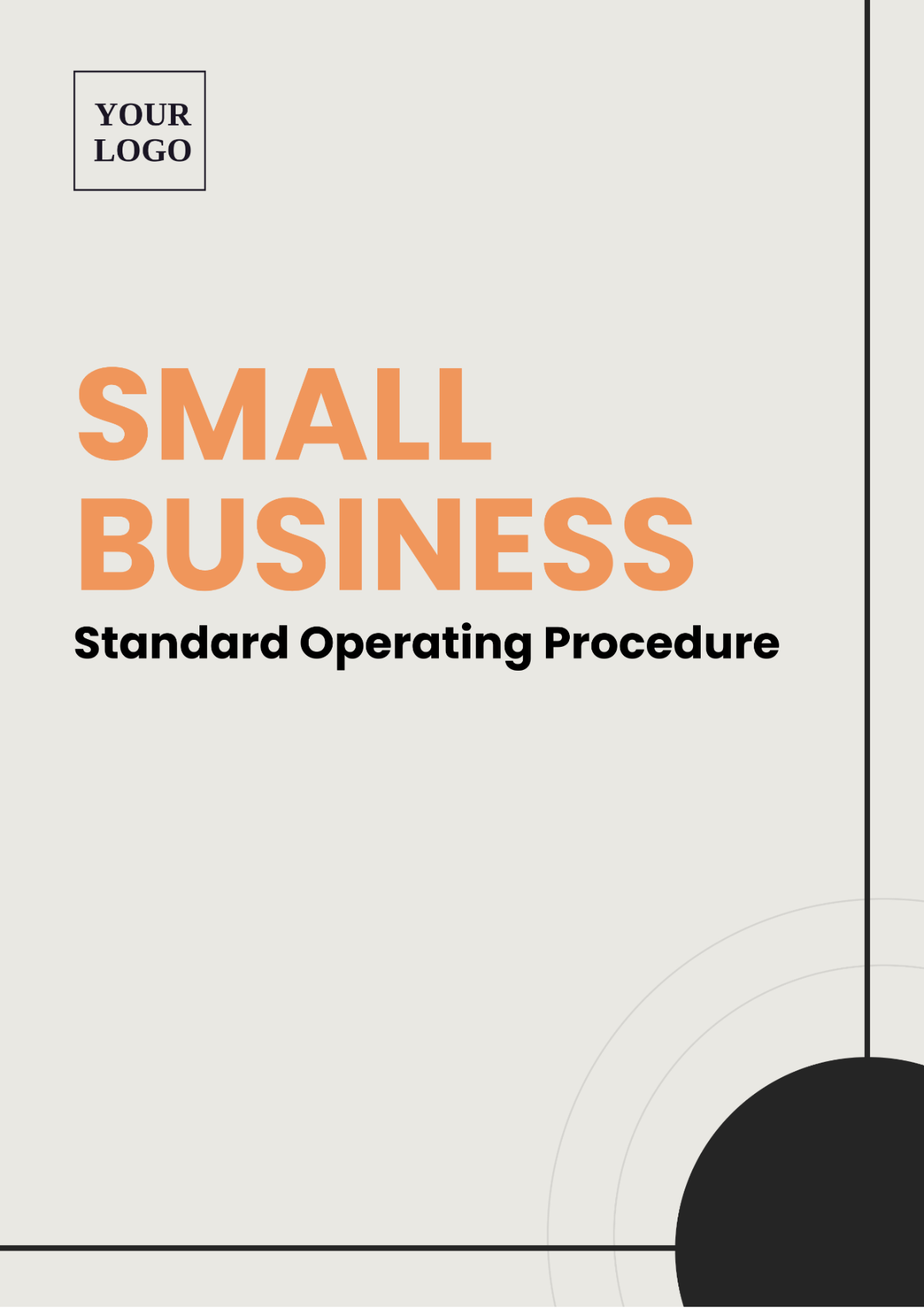Free Small Business SOP

I. Introduction
This Standard Operating Procedure (SOP) outlines the operational procedures for [Your Company Name]'s sales and customer service departments. It encompasses protocols to be followed in sales processes, customer inquiries, order fulfillment, and complaint resolution to maintain high service standards and customer satisfaction.
II. Scope
The Standard Operating Procedure that has been established, applies to all employees. It is specifically relevant to those working within the Sales and Customer Service Departments of [Your Company Name]. It is mandatory for all these employees, without any exception, to strictly adhere to and follow these guidelines. They must do so in order to assure the standardization and optimized functioning of their departments within the company.
III. Responsibilities
A. Sales Department Responsibilities
Sales Representatives ([Your Department]):
Conduct product presentations and demonstrations.
Respond to sales inquiries promptly.
Follow up with potential leads to secure sales.
Sales Manager ([Your Department]):
Oversee sales team performance.
Analyze sales data to identify trends and opportunities.
Develop sales strategies in collaboration with the marketing team.
B. Customer Service Department Responsibilities
Customer Service Representatives ([Your Department]):
Handle customer inquiries via phone, email, and chat.
Process orders and provide order status updates.
Resolve customer complaints effectively and in a timely manner.
Customer Service Manager ([Your Department]):
Monitor customer service metrics such as response time and satisfaction ratings.
Implement training programs for customer service representatives.
Continuously improve customer service processes based on feedback.
IV. Sales Process
A. Lead Generation
Utilize various lead generation channels such as:
Social media advertising
Email campaigns
Networking events
Qualify leads based on:
Budget
Needs
Timeline
B. Sales Presentation
Schedule appointments with qualified leads.
Prepare personalized sales presentations addressing the client's specific needs and pain points.
Highlight the features and benefits of [Your Company Name]'s products/services.
V. Customer Inquiry Handling
A. Inbound Inquiries
Answer incoming calls promptly within 30 seconds.
Respond to emails and chat messages within 1 hour.
Use a standardized script for handling common inquiries.
B. Order Fulfillment
Receive and process orders accurately.
Verify inventory availability before confirming orders.
Coordinate with the shipping department to ensure timely delivery.
VI. Complaint Resolution
A. Complaint Intake
Listen actively to the customer's complaint.
Document the details of the complaint in the CRM system.
B. Resolution Process
Apologize for the inconvenience caused.
Offer a solution that meets the customer's expectations.
Follow up with the customer to ensure satisfaction.
VII. Performance Monitoring
A. Sales Performance
Track sales metrics such as:
Monthly revenue
Conversion rate
Average deal size
Conduct regular sales performance reviews with individual team members.
B. Customer Service Metrics
Monitor customer satisfaction scores.
Review response times for inquiries and complaints.
Address any performance issues through coaching and training.
VIII. Continuous Improvement
A. Feedback Mechanism
Encourage customers to provide feedback through surveys or feedback forms.
Solicit input from employees on process improvements.
B. Process Optimization
Analyze feedback and performance metrics to identify areas for improvement.
Implement changes to streamline processes and enhance the customer experience.
IX. Documentation and Training
A. SOP Updates
Review and update this SOP annually or as needed.
Communicate any changes to all relevant departments.
B. Training Programs
Develop training modules based on SOP updates and performance reviews.
Conduct regular training sessions to ensure all employees are familiar with the latest procedures.
X. Compliance
A. Legal Requirements
Ensure compliance with all relevant laws and regulations governing sales and customer service.
B. Data Privacy
Safeguard customer data in accordance with [Your Company Name]'s privacy policy.
XI. Conclusion
This SOP serves as a comprehensive guide for [Your Company Name]'s sales and customer service operations. Adherence to these procedures will contribute to the achievement of high service standards and customer satisfaction.
XII. Approval

[Approver’s Name]
[Approver’s Role]
[Approval Date]
- 100% Customizable, free editor
- Access 1 Million+ Templates, photo’s & graphics
- Download or share as a template
- Click and replace photos, graphics, text, backgrounds
- Resize, crop, AI write & more
- Access advanced editor
A Small Business SOP (Standard Operating Procedure) is a structured document that provides detailed instructions for carrying out various tasks and processes within a small business organization. These procedures ensure consistency, efficiency, and quality in the execution of business operations and functions.





























